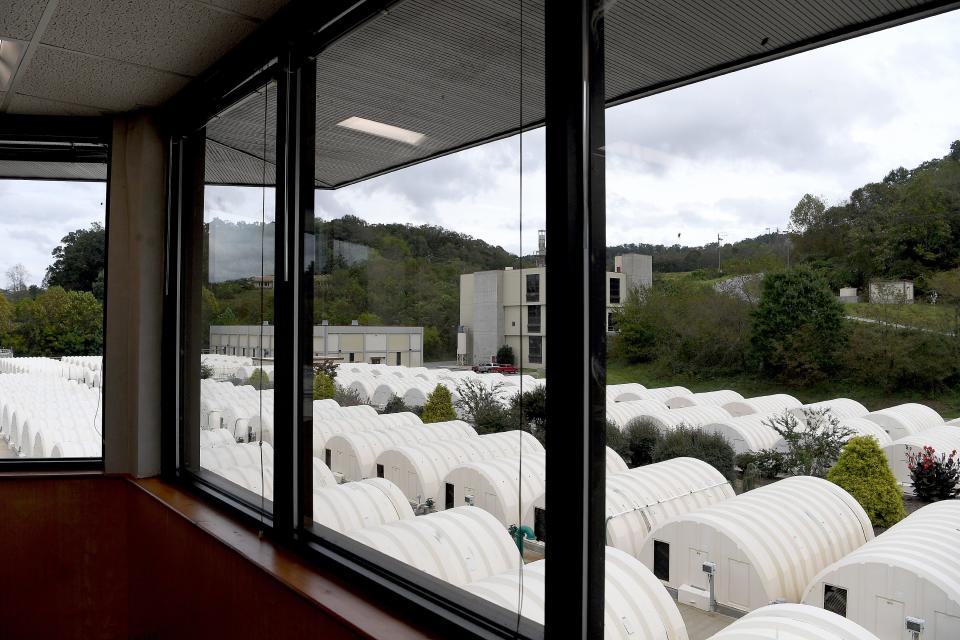Answer Man: Sewage 'stench' permeates Woodfin? Plant in compliance with regulations?

Today’s batch of burning questions, my smart-aleck answers and the real deal:
Question: Why do we never hear anyone discuss the stench that regularly permeates Woodfin due to the sewage treatment plant? A relative of mine who works in the water treatment industry visited the area. He says that it’s not supposed to be that way; it doesn’t have to be that way. He says they are doing something wrong or neglecting to do something they ought. We can’t believe the residents there don’t revolt. And as more people move here, how much worse will it get?
My answer: On a positive note, there's no extra charge for the smell.
Real answer: I suspect this may be a case of someone who moved here from another area or even another state and wasn't aware of the Metropolitan Sewerage District plant's exact location or its scope of operations.
MSD General Manager Tom Hartye suspects the same, as their techniques for sewage treatment have not changed in years.
Hartye said "you're never going to remove the smell" completely, but the treatment plant does adhere to its permits and limits the smell as much as possible. He also noted that the effluent that goes back into the French Broad River after treatment does not have a sewage smell.
More: Answer Man: Mysterious smelly 'portal' along greenway? Expired license follow-up?
"We do have a ridge behind (the plant), so it does go up and down the river a bit," Hartye said of the odor. "But by the time you're even to Woodfin Park you don't smell it. And at the old landfill, you don't smell it there, either."
Any odors emanating from the plant, which treats the sewage for much of Buncombe County and the Town of Fletcher, are also weather dependent, as far as how far they spread, Hartye said. Windy or cloudy conditions on some days can make the smell more noticeable in some areas.

Hartye said MSD is in compliance with its state permits.
As of 2020, the plant collected on average about 23 million gallons of wastewater a day. During extreme rain events that can surge to over 65 million gallons.
Asheville-Buncombe Air Quality Director Ashley Featherstone said "odors are addressed in the state air quality rules, and MSD does have an air quality permit with us."
"MSD is currently in compliance with their air quality permit," Featherstone said via email. "We have not noticed a change in the odor from MSD."
The agency does have a "nuisance odor rule" in its Air Quality Code.
More: Answer Man: Microplastics in local water? In the French Broad?
"Municipal waste water treatment plants and a few other sources are exempt from these rules," Featherstone said. "These operations are known to emit hydrogen sulfide compounds which do create odors that are considered a nuisance and do generate complaints."
Hydrogen sulfide is a concern "at very high levels," Featherstone added, but it "can be detected at much lower levels, similar to those emitted from wastewater treatment plants, and as such, we do not consider these emissions to be harmful to public health."
At the state level, Anna Gurney, spokeswoman with the North Carolina Division of Water Resources, said MSD's permit is "actually regulated through Water Resources through an NPDES (National Pollutant Discharge Elimination System) permit, not through the state's Air Quality system.
More: Answer Man: MSD fire cause? Is Ingles Advantage Card info sold?
"I checked with our regional operations and compliance officer for that area," Gurney said via email. "This division has not received odor complaints regarding that facility, nor have there been recent compliance issues."
Gurney noted that, "Odor is not specifically regulated by an NPDES permit."
"The water quality standards for various waters address odor as an issue to be controlled in the effluent (treated wastewater) or instream," Gurney said. "The water shouldn’t have an odor after treatment, essentially."
Gurney noted that sewage odor "may occur from the normal operation of sewer line vents in low lying areas and other operations, or an overflow, etc. Odor in sewer lines may occur due to gases escaping via manholes."

About two decades ago, the MSD plant used a "lime stabilization" process that raised the pH level of the waste, killing the microbes. That process did require drying out of sewage in a large building, and that caused complaints about an ammonia smell, Hartye said, but that process hasn't been used in many years.
This is the opinion of John Boyle. To submit a question, contact him at 232-5847 or jboyle@citizen-times.com
This article originally appeared on Asheville Citizen Times: Answer Man: Sewage 'stench' permeates Woodfin NC?

